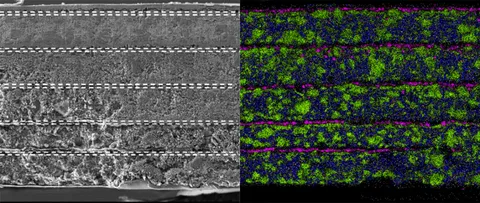Microvast Holdings, Inc. (NASDAQ: MVST) has announced a milestone in the development of its True All-Solid-State Battery (ASSB) technology. This advancement aims to enhance safety, energy density, and efficiency for applications such as data center backup power systems and electric school buses, while also providing potential benefits for sectors including robotics and electric vehicles.
Microvast’s ASSB technology employs a bipolar stacking architecture that allows internal series connections within a single battery cell. Traditional lithium-ion and semi-solid-state batteries, which rely on liquid electrolytes, typically operate at nominal voltages between 3.2V and 3.7V per cell. In contrast, Microvast’s technology eliminates liquid electrolytes, enabling a single cell to achieve significantly higher voltages tailored to specific applications.
This design reduces the number of interconnections between cells, modules, and packs, simplifying the overall system architecture and enhancing energy efficiency and operational safety. Microvast has also developed a proprietary all-solid electrolyte separator membrane based on advanced polyaramid materials. This non-porous separator is designed for solid-state applications, ensuring excellent ionic conductivity and long-term durability, key factors in solid-state battery performance.
Follow us on Linkedin:Battery News
Statements from Company Executives
Yang Wu, CEO of Microvast, stated, “Our solid-state battery innovation represents a significant leap forward in addressing real-world safety and efficiency challenges.” He emphasized the importance of eliminating liquid electrolytes to meet the evolving needs of industries requiring reliable energy storage solutions.
Dr. Wenjuan Mattis, CTO of Microvast, noted, “Our bipolar architecture, combined with our proprietary all-solid separator, simplifies battery design while enhancing energy density and operational safety.” He highlighted the absence of liquid electrolytes, which allows for higher operational voltages compared to conventional designs.
Technical Insights
Figures included in the announcement provide detailed visualizations of Microvast’s bipolar stacked ASSB. A cross-sectional analysis illustrates the morphological structure of the battery cell, emphasizing the alignment of distinct layers of cathode, anode, and solid electrolyte. This design is critical for optimizing current distribution and mechanical stability.
The voltage-capacity curve of Microvast’s ASSB shows a stable operational voltage range between 12V and 21V during charge and discharge cycles, demonstrating the battery’s engineering capabilities and solid-state nature.
Future Developments
Microvast is preparing to enter the pilot production phase, focusing on innovative approaches to address manufacturing challenges. The company aims to deliver safe, high-performance battery solutions that may set new standards in the industry.


Leave a Reply